HOA 2 - ROMANESQUE
1/140
There's no tags or description
Looks like no tags are added yet.
Name | Mastery | Learn | Test | Matching | Spaced |
|---|
No study sessions yet.
141 Terms
Romanesque building types
Churches
Castles
Monasteries
Fortified Towns
Romanesque in Britain
Norman
Romanesque in Germany
Ottonian
marks the beginning of a new era. (Romanesque period)
election of the first Frankish King Charlemagne (A.D. 799) as Holy Roman Emperor
from Carolus, latin for Charles
Carolingian
Political and social system based on the granting of land in exchange for loyalty, military assistance, and other services
Feudalism
Lords divided their lands into estates called
fiefs
were a series of religiously sanctioned military campaigns waged by much of Western Christian Europe, particularly the Franks of France and the Holy Roman Empire.
Crusades
Effect: Brought about different movements resulting in “roman-like” decoration of buildings
The Crusades
a French knight, leader of the First Crusade and founder of the Kingdom of Jerusalem.
Godefroy de Bouillon
was the chief source of education and culture. The erection of a church often resulted in the foundation of a city.
Christianity
the religious become members of an order with common ties and a common rule, living in a mutually dependent community.
The Monastic System
Long trips to visit the relics of Saints
Allowed for the exchange of ideas, including those of architecture and construction.
The Pilgrimage
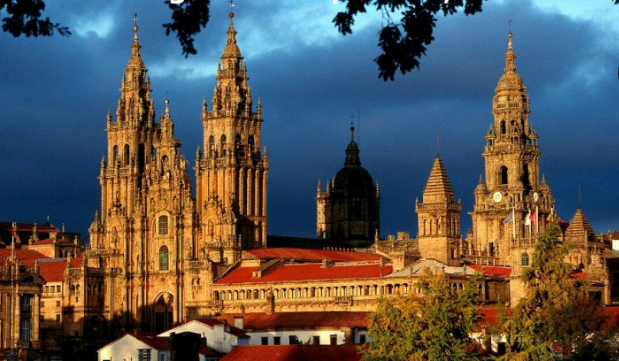
name
Santiago de Compostela, 1078
"Roman-like”
Heavy articulated masonry construction with narrow openings, round arches, barrel vaults, introduction of central and western towers, and sparse ornament.
Romanesque (800-1180)
3 main architectonical typologies
Churches
Monasteries
Castles
Window openings were enlarged
High pitched roofs
North
small window openings
Flat Roofs
South
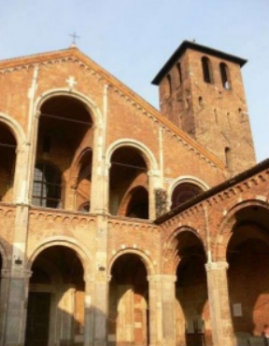
name
Sant’Ambrogio, Milan
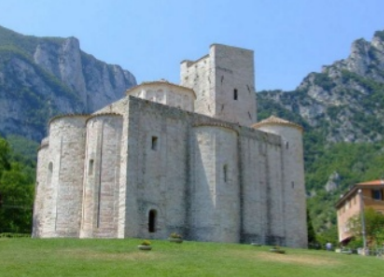
name
San Vittore alle Chiuse, Genga, Italy
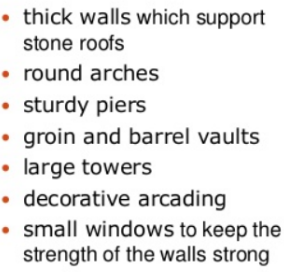
characteristics of
Romanesque
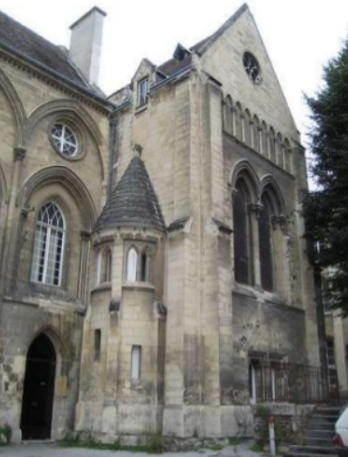
name
Abbaye-aux-Hommes, Caen, France
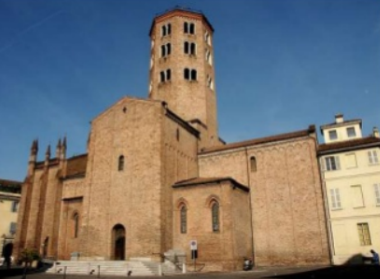
name
San Antonino, Piacenza, Italy
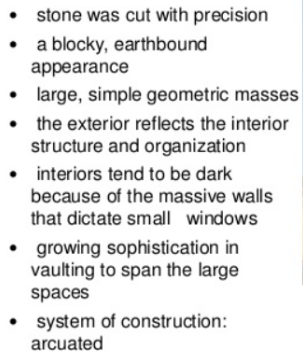
characteristics of
Romanesque
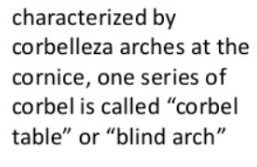
identify
Walls
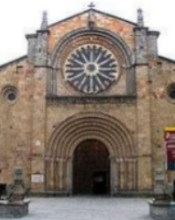
name
Wheel window and recessed arches, San Pedro, Avila, Spain
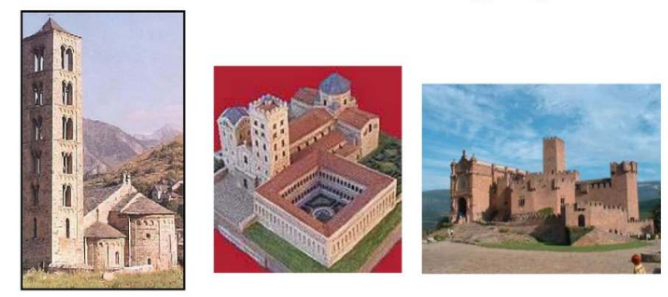
1 ____
2 ____
3 ____
Churches
Monasteries
Castles

identify
Columns
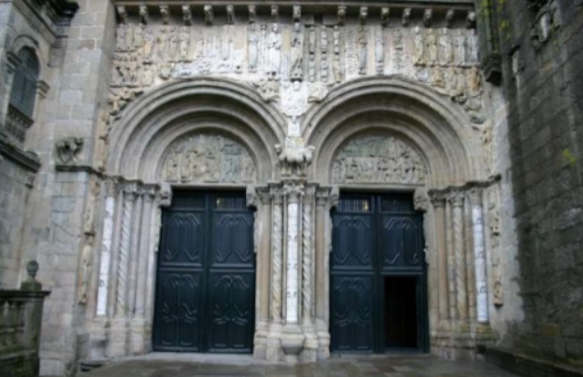
entrance name
Recessed arched entrance
a decorative blind arcade
Lombard
also sometimes known as a double barrel vault or cross vault is produced by the intersection at right angles of two barrel vaults
GROIN VAULTS
refers to the edge between the intersecting vaults
groin
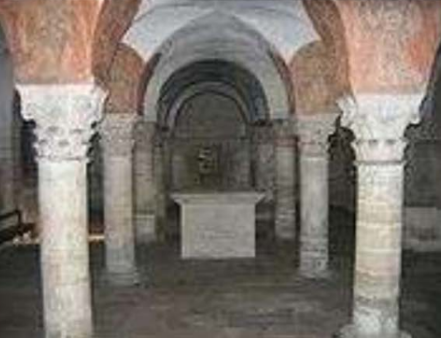
name
Bayeux Cathedral
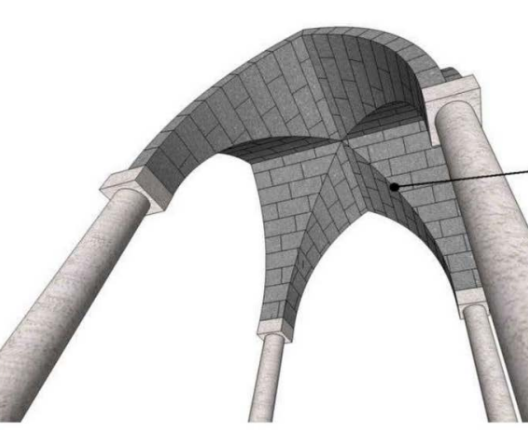
name
Arris
A rib or groin vault divided into four parts by intersecting the diagonal ribs.
QUADRIPARTITE VAULT
A rib vault divided into six compartment by two diagonal ribs and three transverse ribs.
SEXPARTITE VAULT
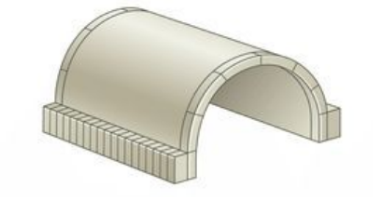
name of the vault
Barrel Vault (Romanesque)
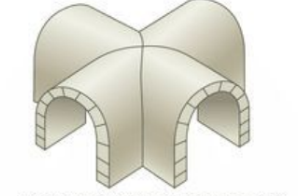
name of the vault
Groin Vault (late Romanesque)
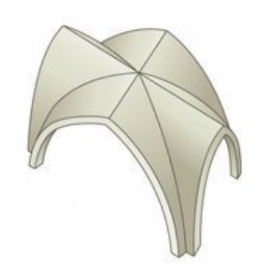
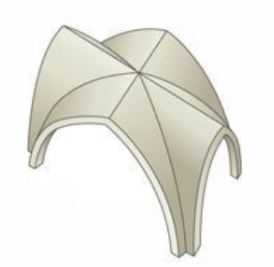
name of the vault
Rib Vault
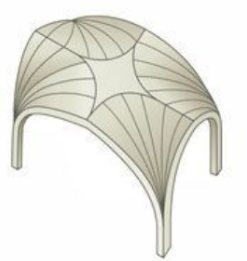
name of the vault
Fan Vault
The creation of the ambulatory helped to accommodate the growing number of pilgrims
AMBULATORIES
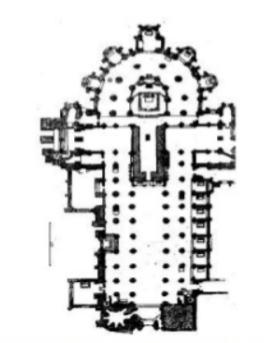
name
St. Martin of Tours, France
Round chapels around the ambulatory
ABSIDIOLES
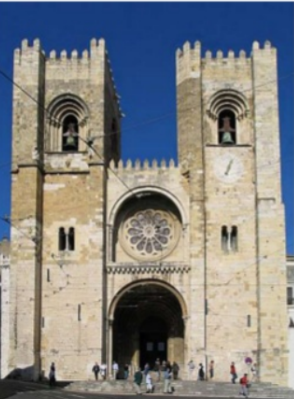
name
Facade of Santa Maria, Cosmedin
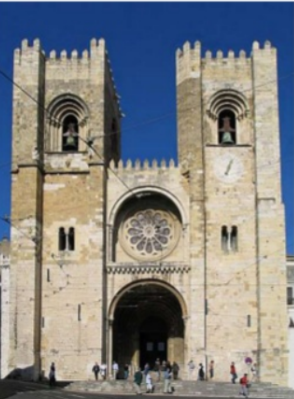
name
round arches at the facade of The Cathedral of Lisbon
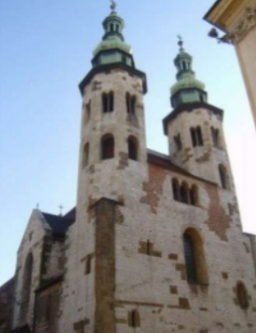
name
St. Andrew’s Church
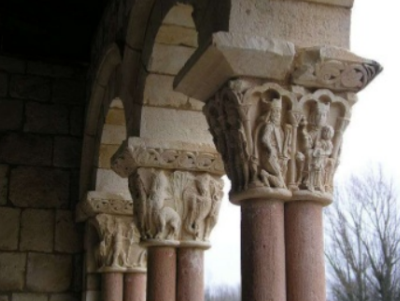
name
Duraton, Sepulvedia, Spain

identify
Doorways with a tympanum
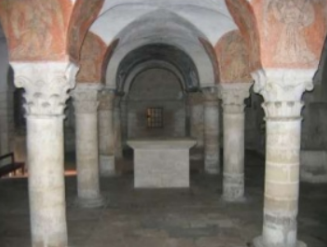
name
Bayeux Cathedral
is the monumental, west-facing entrance section of a Carolingian, Ottonian, or Romanesque church
Westwork
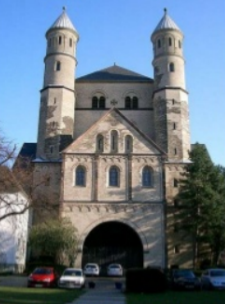
name
St. Pantaleon, Cologne
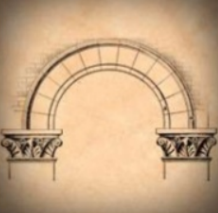
A round arch whose intrados is a full semicircle
Semi Circular ArchS
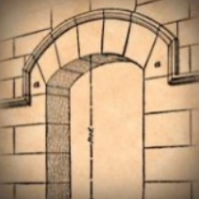
A shallow arch; an arch that is less than a semicircle
Segmented Arch
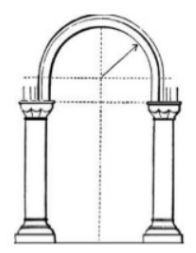
An arch whose curve begins above the impost line
Stilted Arch
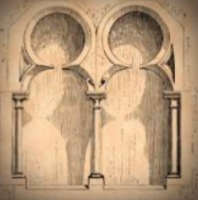
Also called the Moorish arch and the keyhole arch
Horseshoe Arch
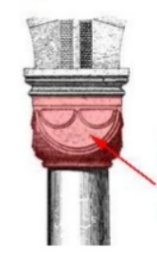
A simple cube-like capital with bottom corners tapered
Block Cushion or Cubic Capital
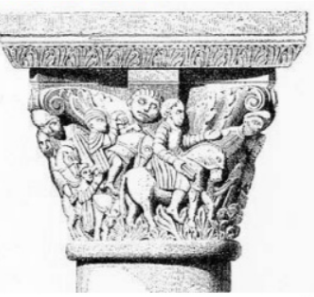
A capital which is decorated with figures of animals, birds, or humans, used either alone or combined foliage
Historiated or Figured Capital
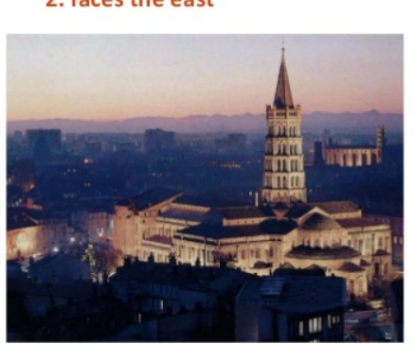
name
Saint Sernin, Toulouse, France

identify
Church
Churches plans could be
Latin cross
Polygonal
Basilical
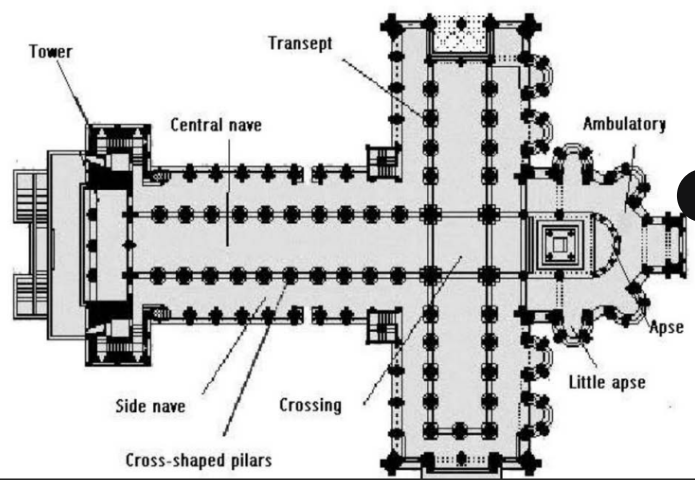
Parts of the Church Plan (just study it)
Tower
Central Nave
Transept
Ambulatory
Apse
Little Apse
Crossing
Cross-shaped pillars
Side nave
An aisle encircling the end of the choir or chancel of the church.
AMBULATORY
The major transverse part of a cruciform church, crossing the main axis at a right angle between the nave and the choir.
TRANSEPT
The intersection of the nave and transept in a cruciform church.
CROSSING
A semicircular or polygonal projection of a building, usually vaulted and used at the sanctuary or east end of a church.
APSE
The principal or central part of a church, extending from the narthex to the choir or chancel, usually flanked by aisles.
NAVE
The longitudinal divisions of a church, separated from the nave by a row of columns or piers.
AISLE
A separately dedicated part of a church for private prayer, meditation, or small religious services.
CHAPEL
A chapel dedicated to the Virgin Mary, usually located behind the high altar of a church at the extremity of the apse
LADY CHAPEL
A covered walk having an arcade or colonnade on one side opening onto a courtyard
CLOISTER
The space about the altar of a church for the clergy and choir, often elevated above the nave and separated from it by a railing or screen.
CHANCEL
An underground chamber or vault used as a burial place beneath the main floor of a church.
CRYPT
The monumental western front of a Romanesque church, treated as a towers containing a low entrance hall below and a chapel open to the nave above.
WESTWORK
A part of a church or a separate building in which baptism is administered
BAPTISTERY
A bell tower, usually one near but not attached to the body of a church
CAMPANILE
A rose window having distinctly radiating mullions or bars.
WHEEL WINDOW
The space between an arch and the horizontal head of a door or window below, often decorated with sculpture.
TYMPANIUM
A column supporting the tympanum of a doorway at its center
TRUMEAU
A roofed promenade, one extending inside or outside along the exterior wall of a building.
GALLERY
A series of arches supported on piers or columns
ARCADE
A thickened abacus or supplementary capital set above a column capital to receive the thrust of an arch.
DOSSERET
Curved or arched like a bow, a term used in describing the arched or vaulted structure of a Romanesque church
ARCUATED
A house or place of residence occupied by a community of persons, especially monks, living in seclusion under religious vows.
MONASTERY
A dining hall in a religious monastery, like where monks eat together.
REFECTORY
The place where the chapter of a church or monastery meets, usually building attached to or hall forming part of the church and monastery.
CHAPTER HOUSE
Interior elevation of Church consists of three levels
Column / Pillar
Tribune
Clerestory
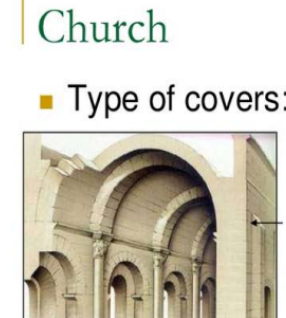
Used mainly to cover the central nave
Barrel Vault
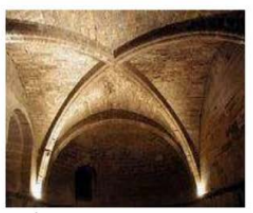
was common in aisles and ambulatory
Groin Vault
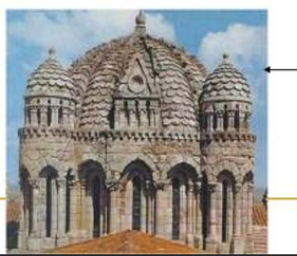
spherical were used in apses
Dome
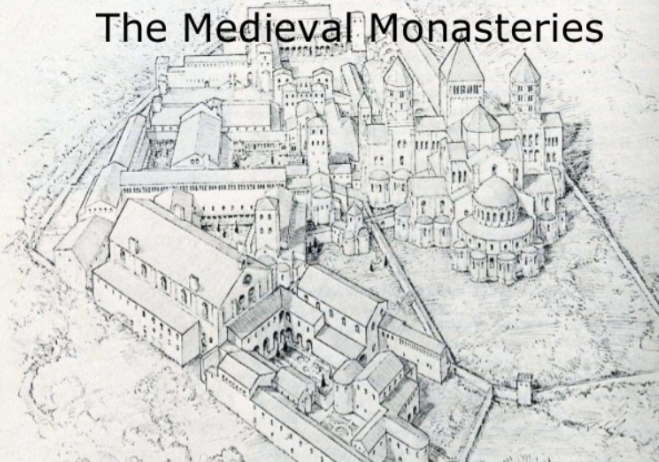
name
Abbey Church, Cluny
were often sited just outside the city gates and provided work, medical care, education, and hostels for travelers.
Monasteries
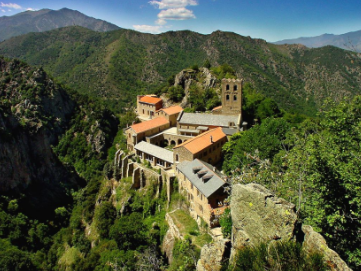
name
St. Martin Canigou
it was designed as a microcosm, as the city of God
Monastery
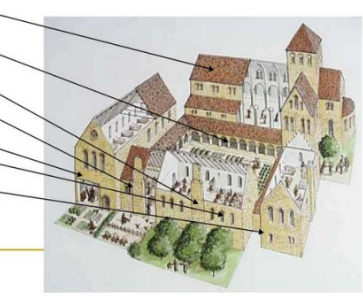
____
____
____
____
____
____
____
Church
Cloister
Chapter Room
Abbot’s house
Monks / nuns room
Refectory
Hospital
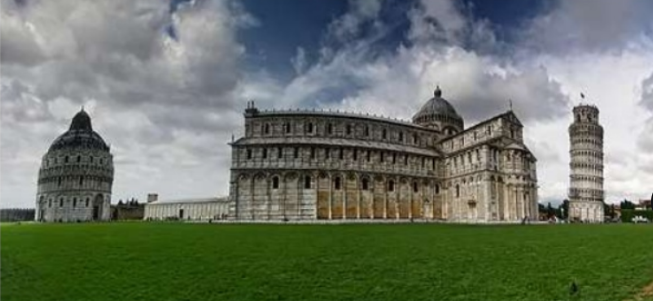
name
Pisa Cathedral with Baptistery, Campanile
A space, area or separate building of a church or cathedral, containing a font where baptism takes place.
Cathedral / Baptistry